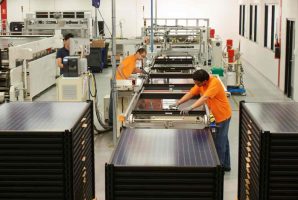In a much anticipated draft decision, the AEMC has sided with SA Power Networks in deciding that distribution access arrangements should be changed so that distributors are compensated by customers that draw electricity from the grid, as well as those that inject electricity into the grid.
This is a very important and far reaching decision. If accepted by ministers it has the potential to greatly change the development of the electricity system in Australia.
My impression of the early media coverage is that there is general acceptance of the AEMC’s premise of bottlenecks associated with rooftop solar; and of their consequent proposal to charge households with rooftop solar for the use to the network to ship their solar exports.
But is it true that the distribution system is congested as a result of the increasing uptake of rooftop solar and, assuming this is the case, is it a reasonable response to charge exporters for the use of the network? In this note I will examine the first question and in a later note I will examine the second.
Is there a bottleneck in distribution networks associated with rooftop solar?
Let me try to answer this by focusing attention on Powercor in Victoria. Powercor is currently going through a revenue control determination (SAPN’s was completed last year). Through this process, distributors apply to the Australian Energy Regulator (AER) to approve expenditure that customers are required to pay for.
In its application to the AER, Powercor said it enthusiastically supported the Victorian government’s Solar Homes program (supporting 700,000 additional rooftop solar installations over 10 years) and it told the AER that it needed $94 million over the five years from 2021 to accommodate the newly connecting solar.
To put this into perspective, this is 5% of Powercor’s $2.041 billion capital expenditure proposal. The AER reviewed this and in its Draft Decision suggested that some of the expenditure could be put off for later and so concluded that $63 million (or 4% of the total capital it suggested was needed) was the appropriate amount.
In its Revised Proposal, Powercor accepted the AER’s Draft Decision, and said this amount was equal to 3% of its total revised capital expenditure proposal. While it would be too glib to say that this amount is inconsequential, it would seem to be quite reasonable to conclude that there is no significant problem of congestion related to the connection of rooftop solar on Powercor’s network.
And yet, quite a different perception exists, not only as promoted by the AEMC and (so far) accepted at face value by the media.
Powercor itself seems to be doing a lot in practice to promote quite a different perception. Indeed 2,023 out of the 32,580 customers in Powercor’s area that installed rooftop solar in the last 18 months were told that they could not export any electricity to the grid. I wonder how many more households chose not proceed with an installation when they were told they could not export their surplus production?
As it turns out, I was one of those 2,023 customers that were told they could not export any surplus rooftop solar, from my house in country Victoria. I asked Powercor to explain to me how they determined this. I received a reply not long after to the effect that they had re-done their sums and decided I could indeed export up to 5kW (what I was seeking to do). I asked them to explain to me why they changed their mind and they refused to do this.
Evidently there is a problem here. The regulatory process provides an opportunity for distributors to make claims and provide evidence to justify them. Powercor did that – noting its enthusiastic support for the Victorian government’s solar homes program. It made a modest claim, which was nonetheless cut back a bit and then accepted. And yet Powercor is seriously constraining rooftop solar development and undermining a government policy that it says it enthusiastically supports.
How would you to explain this situation? I would say that Powercor has powerful incentives to justify capital expenditure to expand its regulated asset base – which provides the basis of its profits.
If Powercor had a good story to tell on the billions it needed to spend to expand capacity to accommodate rooftop solar it would surely tell such a story. The inevitable conclusion from the evidence that such a story has not been told, is that such a story can not sustain scrutiny.
Why, then, does Powercor block rooftop solar exports? Well, because it can. It has a monopoly and is exercising it. Bear in mind that every customer that installs rooftop solar reduces its grid consumption by a third. If the service you provided was shipping electricity you would surely not want to have less electricity to ship?
Is Powercor unusual? I do not know the record of other distributors on constraining rooftop solar exports to the grid. My solar installer told me that the problem seemed to be mainly with Powercor. But none of the other distributors that have been through revenue control decisions recently have sought large amounts of expenditure to accommodate the increasing number of rooftop solar connections. In other words, when push comes to shove, none of the other distributors have made any claim about rooftop solar-driven network bottlenecks.
I conclude from this that the AEMC seems to have been much too gullible in accepting evidently frivolous claims about bottlenecks associated with the connection of rooftop solar.
From that false premise they are now proposing radical changes to the arrangements for access to the electricity distribution system (but not, mind you, to the arrangements for access to the transmission system). In the next article I will examine their proposals in more detail.
See also: Solar tax: Networks able to charge households to export solar power to grid
And: No biggie or bin job? Solar advocates react to export tax proposal
And: Modelling: How the proposed rooftop solar tax will affect solar households
Professor Bruce Mountain is Director of Victoria Energy Policy Centre at Victoria University










